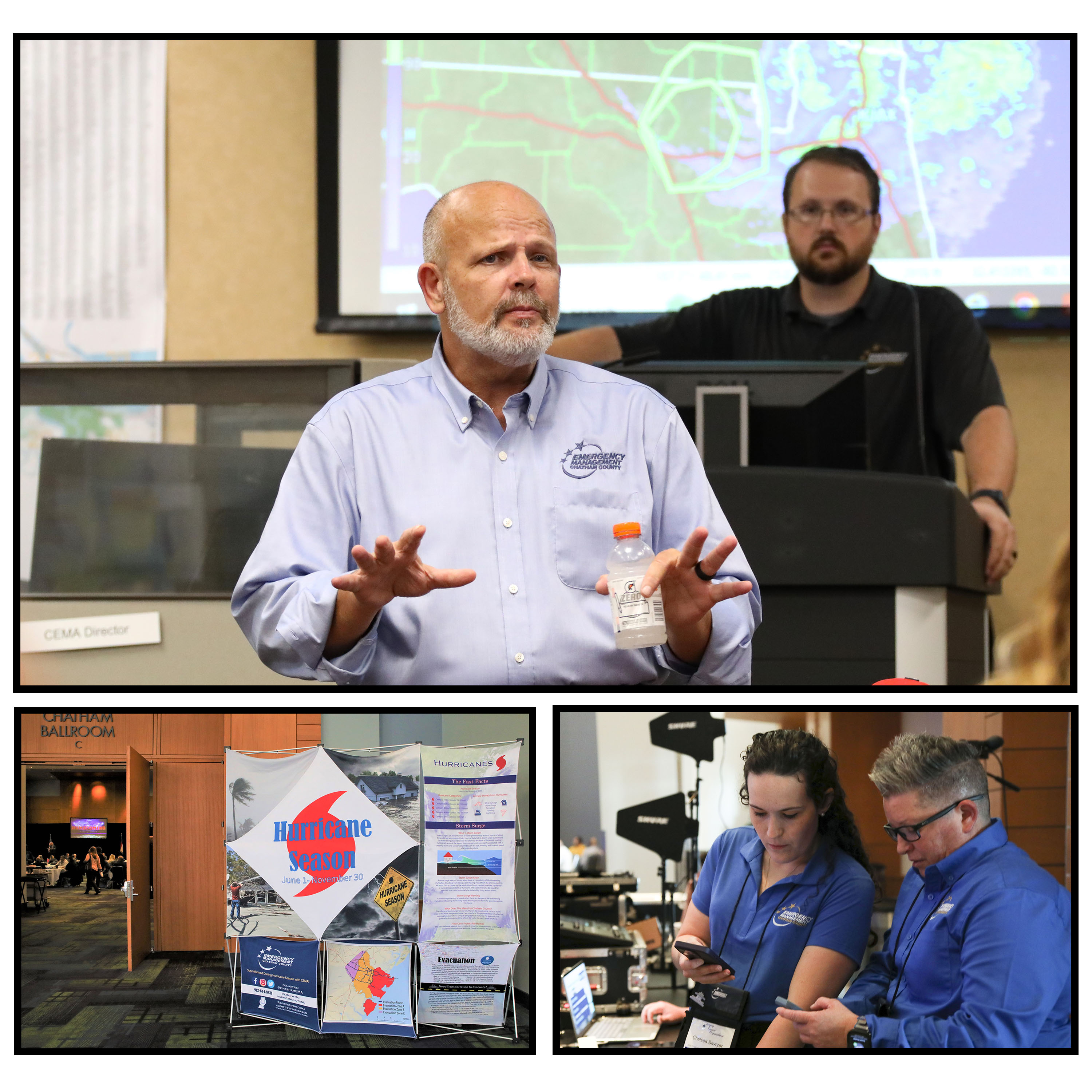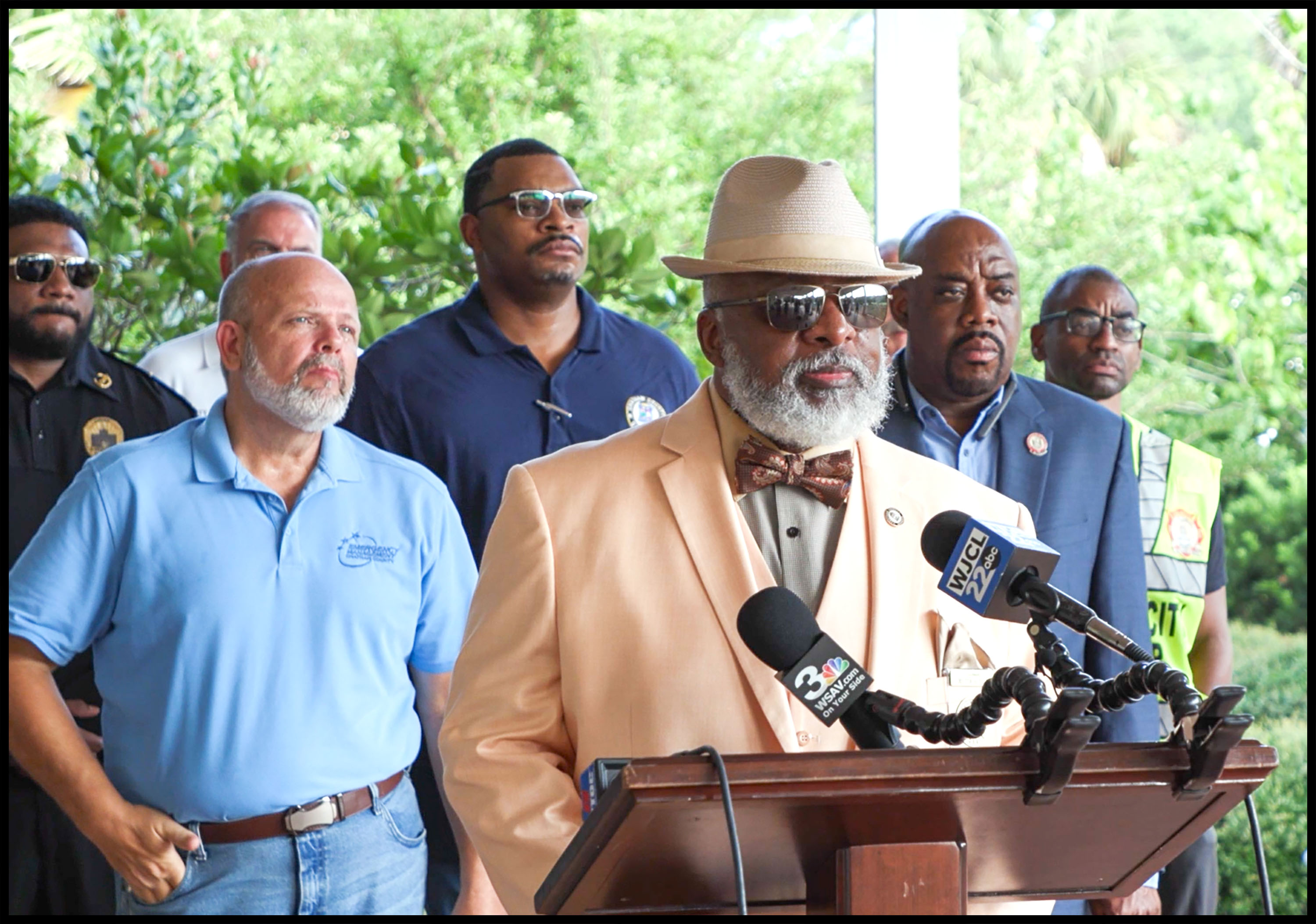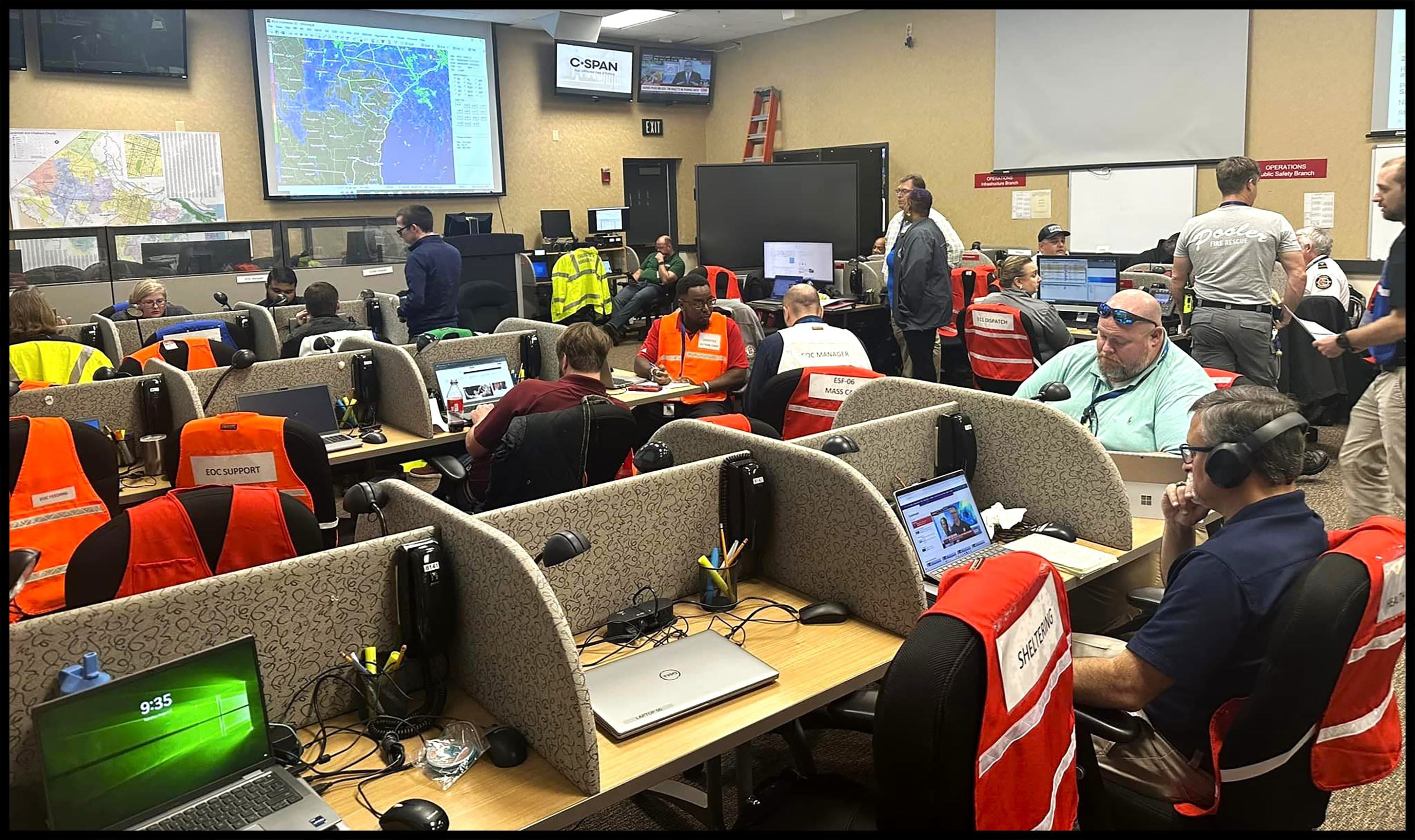CHAPTER 2: CEMA AND THE EOC
Long before Hurricane Season, Chatham Emergency Management Agency is planning, training, coordinating, and monitoring, so that when an emergency or disaster occurs, CEMA is ready to act. From severe weather to hazardous material spills, CEMA is prepared to respond, ensuring the needs of our community are met.

CEMA staff work in advance to assemble teams, called Emergency Support Functions, consisting of agencies and organizations that have overlapping mission areas. These ESF teams come together to work through preparedness, response, recovery, and mitigation considerations for any kind of emergency, looking for ways to become more resilient before disaster strikes. They know the key players. They know all the capabilities. They know who brings what to the table, and they can make those phone calls to activate resources.
In blue sky seasons, CEMA brings together different teams, including those that staff their Emergency Operations Center (EOC), to test their various plans using tabletop exercises, functional exercises, and sometimes even full-scale exercises that call for complete staffing immersed in mock activations. Then, when need arises and the EOC is activated, all staff know their responsibilities.

“In the EOC we’re a support entity, we coordinate and collaborate with everyone involved and manage the consequences of an incident. We’re facilitators and complex problem solvers. The incident commanders, the fire chiefs, the police chiefs, public works directors, the people on the ground making tactical decisions – those are the ones we support by ensuring they have the information and resources they need to be successful.” CEMA’s Director, Dennis Jones, clearly defines the EOC’s purpose in times of emergency, “We’re supporting our first responders, supporting our municipalities, supporting our public with their information needs, and telling them what resources are there and what protective actions they should take to be safe. We’re there to provide that support county-wide. ”

The EOC has three mission areas.
First is Situational Awareness – that starts with CEMA’s constant monitoring and includes two-way communications with municipalities, pertinent agencies, County leadership, and the public. CEMA works to ensure that decision-makers are armed with the relevant and timely knowledge of what’s going on across the community to better support their response staff and the public at large. CEMA also ensures that critical messaging gets out to the Chatham County residents, so that every individual can be informed and make the best decisions in each situation.
Second is Support – if our first responders or other agencies need resources that they cannot acquire through normal means, they reach out to the EOC for assistance. The EOC is the central mechanism to recruit assistance from the State, and the State in turn can solicit aid from the Federal government.
Third is Consequence Management – while first responders are doing a fantastic job of saving lives and protecting property, the EOC backs them up in assisting with the human consequences of a disaster. They help people locate shelter, help individuals with transportation needs get to a safe place to weather the storm, help them find continued care for their animals while they sort out where to go and what to do if they’ve been displaced. They also help solve complex issues involving both the public and private sector to ensure Chatham County residents get back to a sense of normal as quickly as possible.
A significant part of CEMA’s work during an emergency activation is the collecting of data for damage assessment post incident. Even as they are assisting those affected by a storm like Debby in the immediate, they are also laying the groundwork for obtaining possible federal assistance after the waters subside. CEMA reaches out to nonprofits, like Inspiritus or Samaritan's Purse, to provide personal aid in the short-term recovery of damaged properties. CEMA also builds cases to justify financial aid from major government programs like FEMA for the long-term restoration of properties and lives.
A storm like Debby can move through Chatham County in just a day or two; however an EOC activation, with staff managing the emergency, can last from a few days to multiple weeks. Perhaps surprisingly to those not in the trenches, the County can often continue to work an emergency incident for years after the actual event.

Jones again, “There are several phases of recovery. You have the short-term recovery, where we're gathering that damage assessment data and collecting information from residents. During this phase, we're preparinging to make that pitch for a presidential disaster declaration if the situation warrants. Also in short-term recovery, we're working on meeting basic human needs like sheltering, feeding, and distribution of supplies. Next is your intermediate recovery, when people are starting to get back into their homes and everything's starting to come back online as business reopens. People are putting pieces together as best they can as they work with their insurance providers to make repairs. And then you have the long-term recovery, where disaster survivors are finding a new reality and hopefully are becoming more resilient than before the disaster struck.”
Continue Reading:
Chapter 3: Team Chatham


